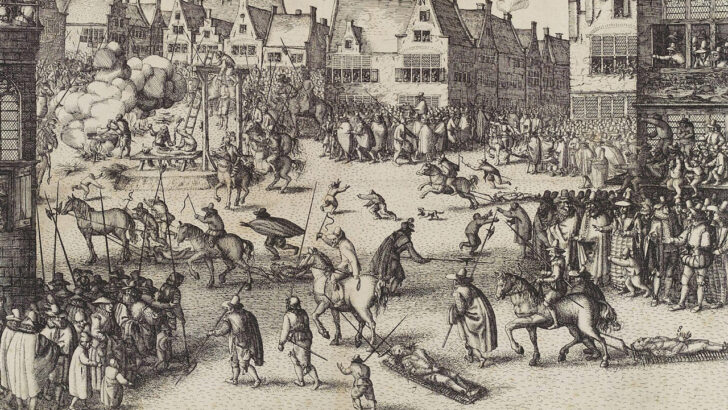The Douai Martyrs, by Gerard Skinner (Gracewing Publishing, £14.99/ €17.99)
Gerard Skinner, who once studied at the Royal Academy of Music in London, and later at the Venerable English College in Rome. He is the author of many books, including the valuable Newman the Priest. Here, however, he turns to a theme which should perhaps have a special interest to Irish readers.
Connections
Many people here are aware, because of local connections often enough, of the histories of our select number of Irish martyrs beatified by Rome. But from those grim days of the 16th and 17the Century only one saint emerged.
We are less familiar with the British martyrs, as they are more numerous, except for special exceptions such Gerard Campion and John Gerard, who are helped to prominence by their own books. So this theme will be of special interest to Irish readers
They are of that cohort of faith, the 159 people who were martyred for their Catholic faith in England and Wales from 1577 onwards – let it not be forgotten that there were another set of martyrs in the Kingdom of Scotland, then of course a quite separate country. Though on that point one might add of course, though many English people seem to always forget that north of the Tweed, so to speak, the land and people are not English.
The martyrs in this book are called the Douai Martyrs because of the association with the Catholic college of Douai in France where the accepted Catholic translation of the Old Testament was issued in 1609 to follow the Vulgate which came from Rheims in 1582.
These men passed over into their native England under the shadow of arrest, trial and execution. Some like Campion have always had a prime place in the historical memory of the Church. But here are the details of the individual stories of all those lesser known figures, the story of where they came from, who they knew, where they went and how they died.
Secret agents
They were in their way the secret agents of the Faith. But rather than seeking information and knowledge, they brought it. With them we are never far from the scenario in these tales of the same tale of furtive men passing from place to place, with secret passwords and special codes, those who were courageous, especially as messengers of the Catholic Church.
All those thousands who enjoyed the Hilary Mantel trilogy, all those who watch with fascination yet another documentary on the glories of the civilisation of England in the days of the Tudors, will need to read this book as a counterbalance.
The essential truth is that these brave people were not so much the victims of Protestantism, as might have been said by Catholics in the past, but of the exertion of state power.
They were martyrs not only to the cause of religious tolerance, but the rise of democracy and the freedom of the individual to believe. Though not a ground breaking work of historical scholarship, Mr Skinner’s book is a worthy and readable one, accessible and sensitive of a tragic era for the ordinary readers.


 Peter Costello
Peter Costello Contemporary image of the Douai Martyrs.
Contemporary image of the Douai Martyrs. 